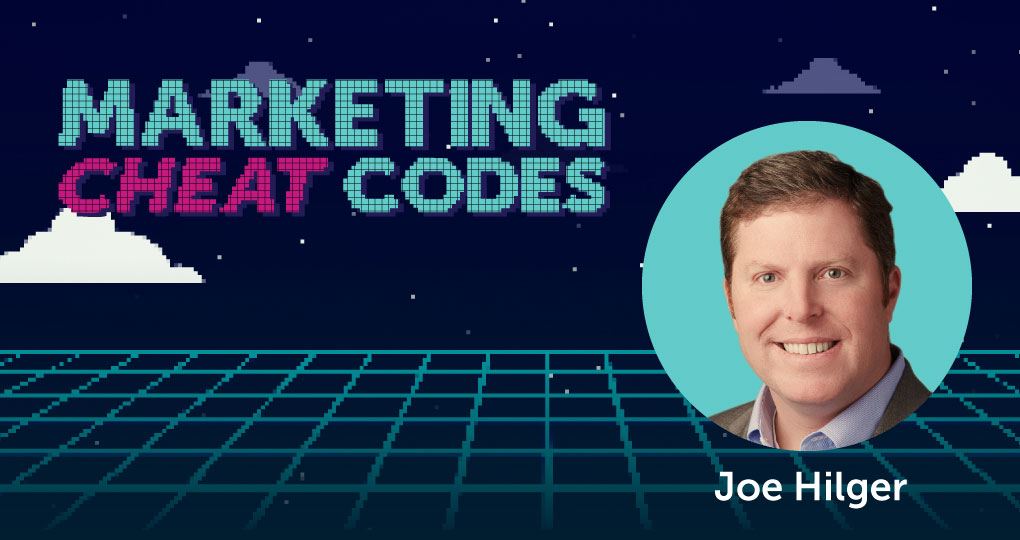Picture this: Your boss asks you to build a knowledge management process, from scratch, for the entire organization. No need to hit panic mode ? this post demystifies the term and will help you nail that request, if it ever comes up. Joe Hilger, COO of Enterprise Knowledge, shares his cheat codes for knowledge mapping, how to surface the right experts in your company, and explains the importance of finding a good ontologist. No healthcare needed for it, we promise. Do you like AI? There’s some of that here, too.
10:01 – Cheat Code #1 – Use knowledge graphs
Looking to get the right information to the right people at the right time? Use knowledge graphs to organize everything related to a particular topic ? from internal documents and data to external resources.
Large organizations have all this information, in multiple systems. The idea is, I have a thing, be it a vendor, or an employee, and there’s information about that thing that I want to know. A graph is very good at creating a map that points to where everything is, in a logical fashion.
So, when we say, ?Get people the right information at the right time,? you want to see all of the information about a customer or an employee, or all the information about a part that we use to manufacture something. A graph can say, ?Here’s the part and all the things that are associated with it.?
Now you have an automated map across all your systems, and it doesn’t care whether it’s data, a document, a web page or even a piece of information outside of your organization. We have this ability to map information and render things back in one place. From a knowledge management standpoint, when you can see everything about a particular topic, that’s huge.
17:11 – Cheat Code #2 – Pinpoint your problem
Wondering how to get started plotting all that information? First, define your biggest information problem that you need answers to, then map it out from there, based on what you need versus what you don’t.
When we first got into knowledge graphs, we were getting calls from people saying, ?My boss told me I have to do a knowledge graph. I don’t even know what it is. Could you help me figure it out??
The first part of our consulting would be, ‘Let’s spend a month or two figuring out what problem we can solve for you, so that when we give you a knowledge graph, it’s something you can go back to your boss and say what a success it is. Let’s build something that matters.?
One of the nice things about these graph databases is you can continue to add-on to them, without problems. You don’t have to get it right the first time. So, pick your problem, start mapping where the information is, then decide what you absolutely need versus don’t.
18:33 – Cheat Code #3 – Hire an ontologist
Before you start building your knowledge graph, find a good ontologist to design deeper logical arrangements of information. With their help, you can classify information and employee knowledge similarly to content metadata. This helps maximize findability, increase reuse of hidden information, and even elevate SEO. As an independent party, ontologists will also help ensure politics stay out of the picture.
There is a design aspect called Ontology Design. We have 23 ontologists. You need one of those. Don’t try to build without an ontologist. It’s like in the old days when people would try to build these big, complex databases and they didn’t have a data architect who knew what they were doing.
So, figure out your problem, start to map where the data is, making sure you’ve got quality there, and then work with an ontologist to help plan and design. Even if you think you can do it, there’s a lot of politics. One of the things we’re doing is breaking down organizational boundaries that people are uncomfortable with.
Let’s say marketing’s driving this need to access information. You’re the CMO, so you can probably get a lot done. But if someone working for you says, ?Hey, Sales, I need this info to get my perfect picture,? you get the power plays. An outsider can say, ?Oh, no, this is how it’s done.? It’s not just about doing it right ? it’s about having an independent party supporting it.
23:26 – Cheat Code #4 – Make it collaborative
How do you find the knowledge experts in your company? Joe has had success creating collaborative communities, where people ask questions. Those who answer the most questions are most likely your experts.
We started to look at the activities people were doing and use that to measure effectiveness. We couldn’t just say, ?Mark yourself as an expert,? because the ones that said they were, weren’t. The ones that were, were never going to tell anyone except when it came time for a raise.
We had to come up with ways to encourage people to share ? those who had it. We created collaborative communities where people could ask for help, and an answer, and made it a safe space. Then we mined that to see who was answering the most questions.
27:07 – Cheat Code #5 – Create a reward system
Once you?ve found your experts, it’s time to collect their knowledge and make it accessible to all. How? Look for an entry point in your company’s processes, while creating a non-monetary reward system.
We spend a lot of time looking at processes and say, ?Oh, here’s this process where someone does something. Can we capture information about that process, or add a simple step that feels natural, that will allow us to collect information we can then use to help others ? and get information out there??
And then, at the same time, ?Can we create a reward system?? It’s not monetary, it’s, ?Because I contributed here, someone else got help. I know when I go to this place, I can get help too, because people use it.?
Creating the reward system and aligning with processes is how you make this work. Too many people are fixated on, ‘Let’s get this application in place,? and miss the key part of, ?How are we going to get information out of this?? That’s a big part of making sure information is collected.
It’s amazing how much information you can derive from things people do. It can be as simple as, ?If they?ve worked on three projects that have these types of skills for these industries, then they probably have some knowledge,? and we haven’t asked them a single question.
35:46 – Cheat Code #6 – Try Explainable AI
Looking for ways to use AI? Consider it for your knowledge graph! Just make sure you use the right kind. Try Explainable AI, which provides reasoning for its decisions and allows you to tweak algorithms to ?get it right.? The alternative, Black Box AI, can’t do either.
You’re hearing about ChatGPT and there’s some neat stuff there, but there’s two camps for people who are really into it. One is ?Black Box Machine Learning,? which is, ?We’re going to feed this system a whole bunch of stuff and it’s going to figure out the right answers, and give us AI to do it.?
The other side is what we call ?Explainable AI,? where we’re going to create something that has formulas to allow us to create expectations of things and algorithms that we can tweak. Knowledge graphs tend to be on the Explainable AI front.
Machine learning-based AI is a great demo, but the second you don’t get the answer you want, you can’t fix it. If you do Explainable AI and get an answer that’s not quite what you want, you can say, ?Maybe our algorithms are wrong ? let’s play with that.? To me, Explainable AI is the way companies should be focused on building their AI answers.
Want more marketing cheat codes? Sign up for the latest episodes ? and never miss out again.



